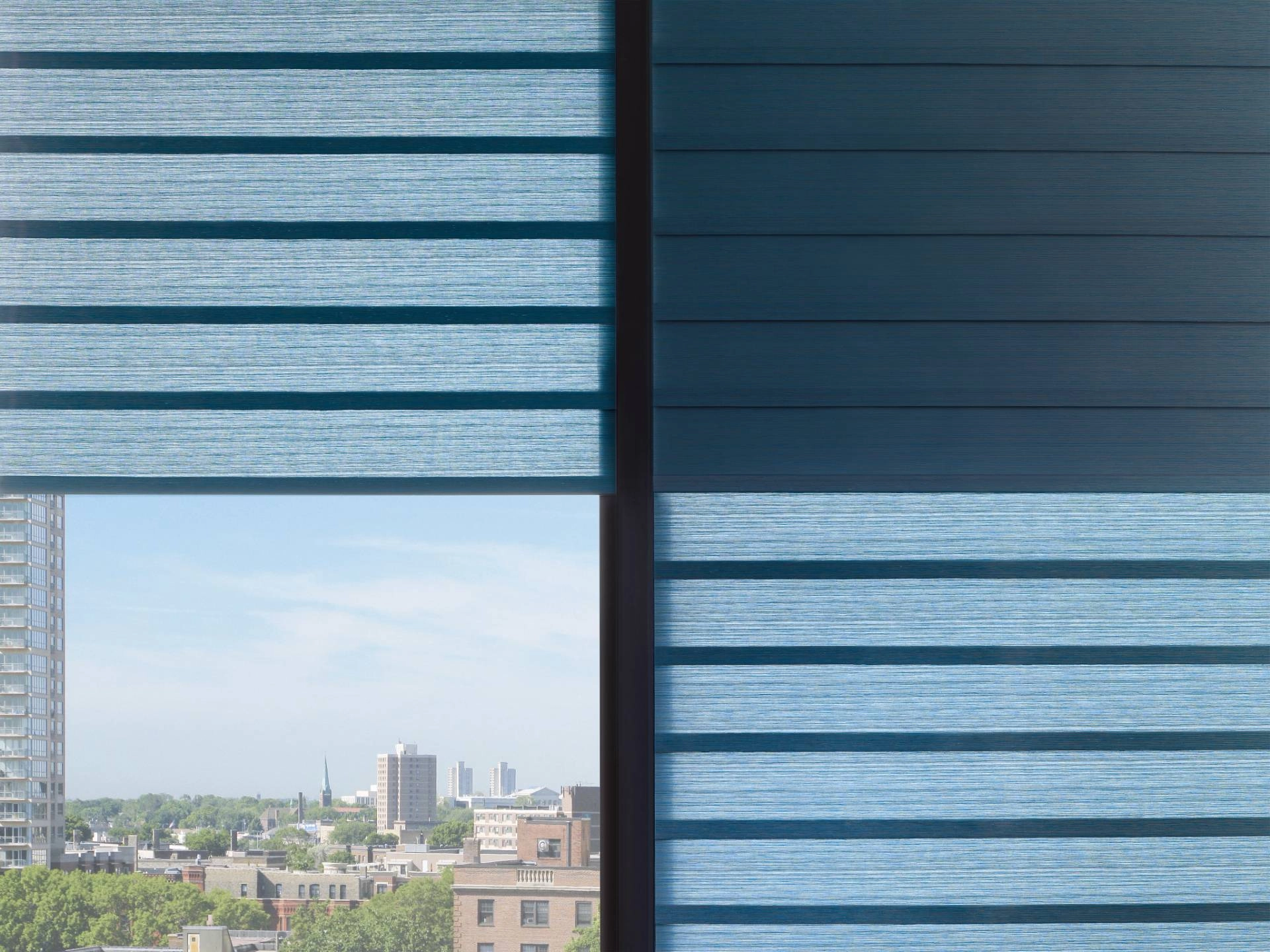Comparing Blinds and Shutters for your Home
Clean lines and an intelligent style unite blinds and shutters, and these versatile window treatments bring numerous benefits to the homes they adorn. While there are many similarities between blinds and shutters, there are also some key differences, and homeowners must know both when selecting new window treatments.

Similarities Between Blinds and Shutters
While there are many ways in which blinds and shutters are different, there are also many similarities between these two classic window treatments thanks to their construction style and compatible modern amenities.
- Slatted Design Style: Both blinds and shutters have a slatted construction style that uses vanes and louvers to control light by tilting open or closed in unison. This design allows blinds and shutters to block direct sunlight while still permitting natural illumination, maintaining natural airflow into a space, and providing privacy while not completely blocking the view. They can regulate multiple environmental factors simultaneously to create more comfortable home interiors.
- Hard Building Materials: Another similarity between blinds and shutters is their building materials. Blinds and shutters are hard window treatments because they use wood, faux wood, composites, or vinyl materials.
- Available with Motorization: A fabulous modern upgrade available for select models of both blinds and shutters is motorization. PowerView® by Hunter Douglas transforms standard treatments into highly efficient and accessible treatments with control options for homeowners, including a handheld remote, wall panel, online app, or smart home synchronization.
Key Differences for Shutters
The solid building materials and slatted design may unify blinds and shutters as hard window treatments, but each type has critical differences. The unique features of interior plantation-style shutters give this window covering both improved safety and long-term monetary benefits.
- Child Safe: There are no loose or hanging lines because you control interior shutters with tilt bars. This is crucial for child safety as cord-free means no strangulation hazard for young children.
- Increased Home Value: Shutters are a tangible upgrade contributing to a home's overall value if they're of professional quality.
Hunter Douglas makes three types of interior shutters: Heritance® Wood Shutters, Palm Beach™ Polysatin™ Vinyl Shutters, and NewStyle® Composite Shutters.
Key Differences for Blinds
Blinds have always been a versatile window treatment, so they can work in different rooms throughout the home. Modern upgrades have added features that help distinguish blinds from other hard window treatments.
- Horizontal and Vertical Applications: Blinds come in both horizontal and vertical models, so they work on a wide range of residential glass features, including windows, oversized windows, patio doors, and sliding glass doors. There are even types of panel-track blinds you can use as room dividers.
- Versatile Movement: One unique feature of blinds is their ability to move in two ways. The vanes on blinds can rotate in unison to block or deflect light, and you can raise open them entirely for unencumbered views.
In the Hunter Douglas collection of blinds, homeowners will find Parkland® Wood Blinds, EverWood® Faux Wood Blinds, Modern Precious Metals® Mini Blinds, and various vertical treatments.
Find Your Blinds and Shutters at The Shade Shop Today!
Explore the entire Hunter Douglas collection of blinds and shutters at The Shade Shop with the help of their knowledgeable design team. Request a consultation today to discuss options and upgrades for new blinds and shutters that best suit your home. The Shade Shop is located near Grand Rapids, Michigan, and serves Holland, Grand Haven, Spring Lake, and Grand Rapids, Michigan.
